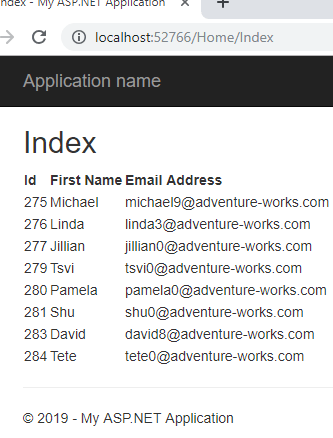
- #C3 ef join objects from different contexts android#
- #C3 ef join objects from different contexts software#
iPhone, iOS and Apple are the registered trademarks or trademarks of Apple Inc.Certified ScrumMaster (CSM) and Certified Scrum Trainer (CST) are registered trademarks of SCRUM ALLIANCE.AWS, Amazon Web Services and its products are either registered trademarks or trademarks of Amazon Web Services, Inc.
#C3 ef join objects from different contexts android#
Android, Android Logo, Google, Google Cloud and its products are either registered trademarks or trademarks of Google, Inc. #C3 ef join objects from different contexts software#
Apache Hadoop, Hadoop, and Apache logo are either registered trademarks or trademarks of the Apache Software Foundation. Your valuable feedback, question, or comments about this article are always welcome. I would like to have feedback from my blog readers. I hope you will enjoy LINQ query with AND and OR conditions while programming with LINQ. Read More Articles Related to LINQ What do you think? Where (cust.CustID=ord.CustomerID || cust.ContactNo=ord.ContactNo)įROM AS, AS To write a query for inner join with or condition you to need to use || operator in where condition as shown below: DataContext context = new DataContext() Sometimes, you need to apply inner join with or condition. If one of them is defined NULL and other is defined NOT NULL then we need to do typecasting of a NOT NULL field to NULL data type like as above )Īlways remember, both the anonymous types should have exact same number of properties with same name and Datatype otherwise you will get the compile time error "Type inference failed in the call to Join".īoth the comparing fields should define either NULL or NOT NULL values. Both anonymous types should have exact same number of properties having same name and datatype To write query for inner join with and condition you need to make two anonymous types (one for left table and one for right table) by using new keyword and compare both the anonymous types as shown below: DataContext context = new DataContext() Sometimes, you need to apply inner join with and condition. Join od in context.Orders on pd.ProductID equals od.ProductID The simple LINQ inner join example is given below: DataContext context = new DataContext() As you know, Inner join returns only those records or rows that match or exists in both the tables. LINQ has a JOIN query operator that provides SQL JOIN like behavior and syntax. 
JavaScript ES6 Interview Questions Answers BookĪSP.NET Web API Questions and Answers Book NET Framework Questions and Answers BookĪSP.NET and AJAX Questions and Answers BookĮntity Framework 6.x Questions and Answers BookĮntity Framework Core Questions and Answers BookĪzure Administrator Questions and Answers BookĪzure Developer Questions and Answers Book

NET Design Patterns Questions and Answers Book NET Microservices Certification TrainingĪSP.NET MVC with WebAPI Certification TrainingĪWS Solutions Architect Certification TrainingĪzure Fundamentals Certification TrainingĪrtificial Intelligence Certification Courseĭata Science with Python Certification Courseĭocker and Kubernetes Certification Trainingįrontend Foundations Certification Training






 0 kommentar(er)
0 kommentar(er)
